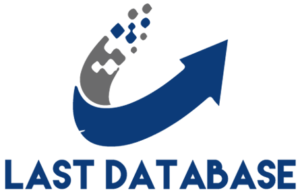In contact centers, how successful or unsuccessful a customer interaction is often influences satisfaction and loyalty in ways that ripple far beyond the immediate interaction. When customers reach agents and get issues resolved quickly, they’re not just satisfied with that particular interaction — Customer Experienc they can be more likely to remain loyal customers and recommend the service to others. However, the opposite is equally true: Multiple transfers and repeated information requests increase frustration and can damage long-term customer relationships.
According the “The State of Customer Experienc” report from Genesys, 30% of consumers surveyed have stopped doing business with brands in the past year due to phone number list negative interactions. This statistic underscores the critical importance of getting both user flows and user journeys right. The cost of poor customer experienc isn’t just measured in immediate customer satisfaction scores — it affects customer lifetime value, brand reputation, and ultimately, the bottom line.
The Role of Technology in Experience Optimization
Modern contact centers leverage sophisticated technology to optimize both user flows and journeys. Artificial intelligence (AI) and machine learning play increasingly important roles in identifying patterns and predicting customer needs. These technologies can analyze vast amounts of interaction data to identify common pain points, predict customer behavior, and suggest improvements to both individual flows and overall journeys.
For example, AI-powered analytics might reveal that what is organic coverage? customers who start their journey through a mobile app are more likely to require agent assistance when completing complex transactions. This insight could lead to improvements in the mobile interface or the development of better in-app support resources.
Practical Guide to Mapping User Flows
The process of mapping user flows requires a systematic approach and the right tools. Modern contact centers rely on a comprehensive suite of analytics tools to gather and interpret customer interaction data. These include call analytics for understanding voice interactions, chatbot logs for tracking automated conversations, IVR tracking for monitoring self-service usage, and CRM data for maintaining context across interactions.
Mastering Customer Journey Management
Journey management gives you visibility you need to personalize customer experienc. Get a phased approach for implementing journey management and tips for Customer Experienc reducing time to value.
- Identify User Goals: Analyze customer patterns across channels, examining IVR drop-off rates, chatbot interactions, and support tickets to understand common objectives and pain points.
- Document Current State: Map existing phone number list processes and interactions, including all possible paths a customer might take to achieve their goal. This includes alternative routes and error scenarios.
- Analyze Interaction Steps: Break down each flow into detailed steps, noting where customers make decisions and what information they need at each point.
- Identify Pain Points: Use analytics data to spot where customers frequently abandon processes or require additional assistance. Look for patterns in these friction points.
- Design Improvements: Create new Customer Experienc flow variations that address identified issues while maintaining security and compliance requirements.
- Test and Validate: Implement changes in controlled environments and measure their impact on key metrics like completion rates and customer satisfaction.
- Monitor and Refine: Continuously track performance metrics and gather feedback to make ongoing improvements to the flow.






